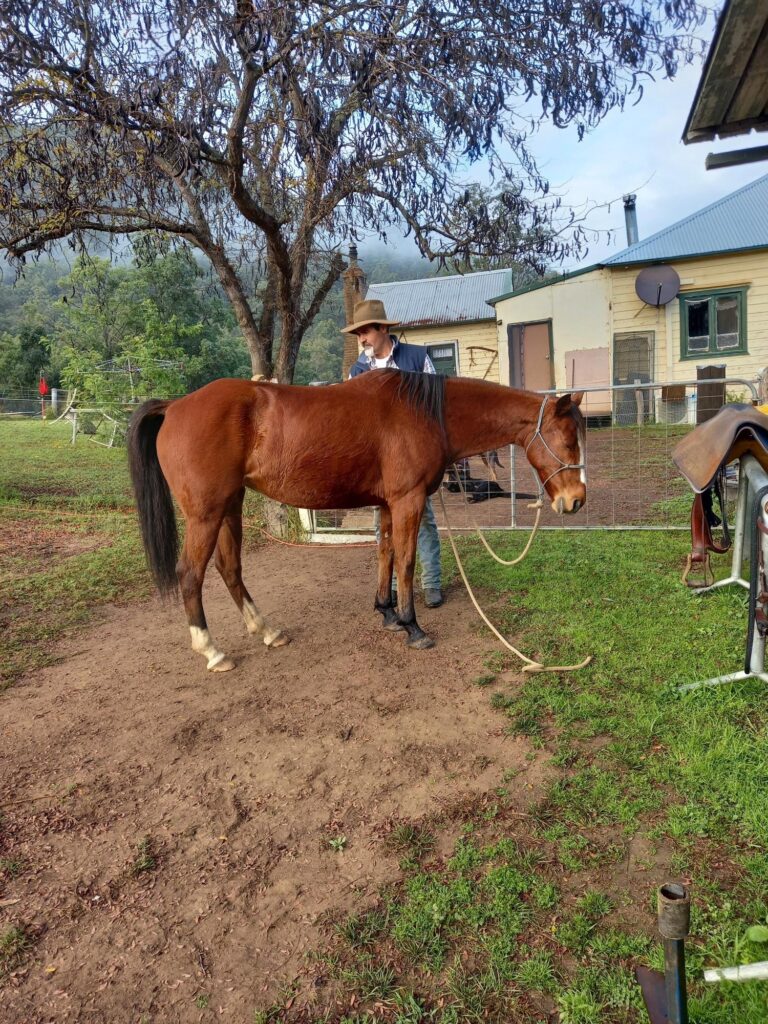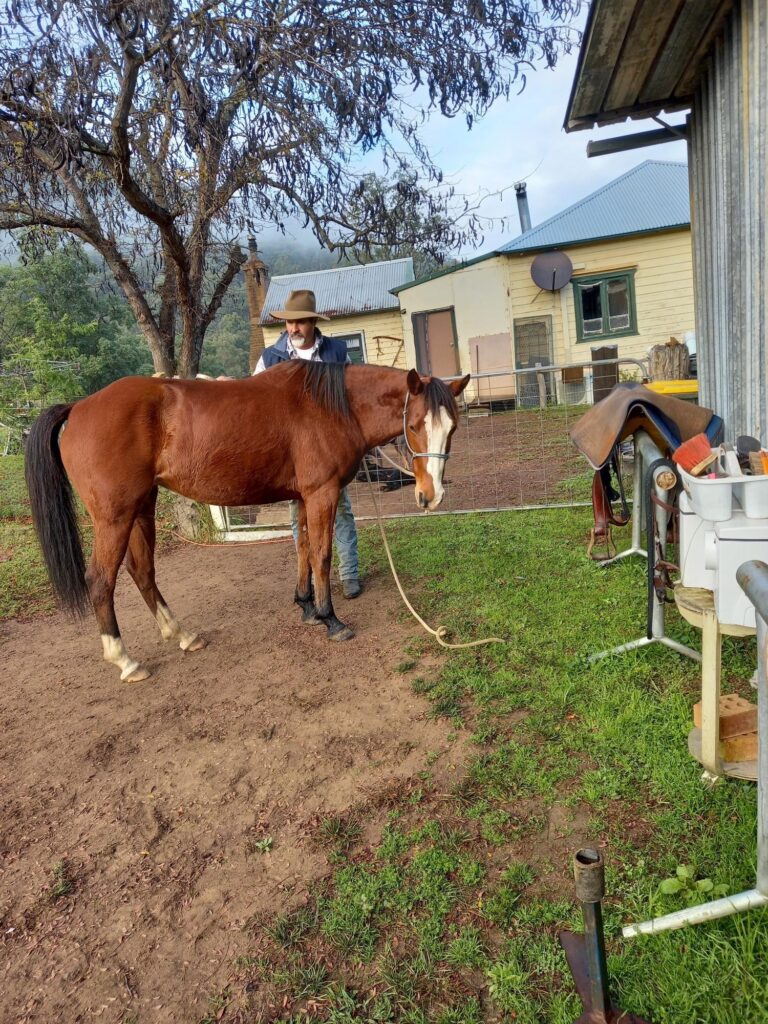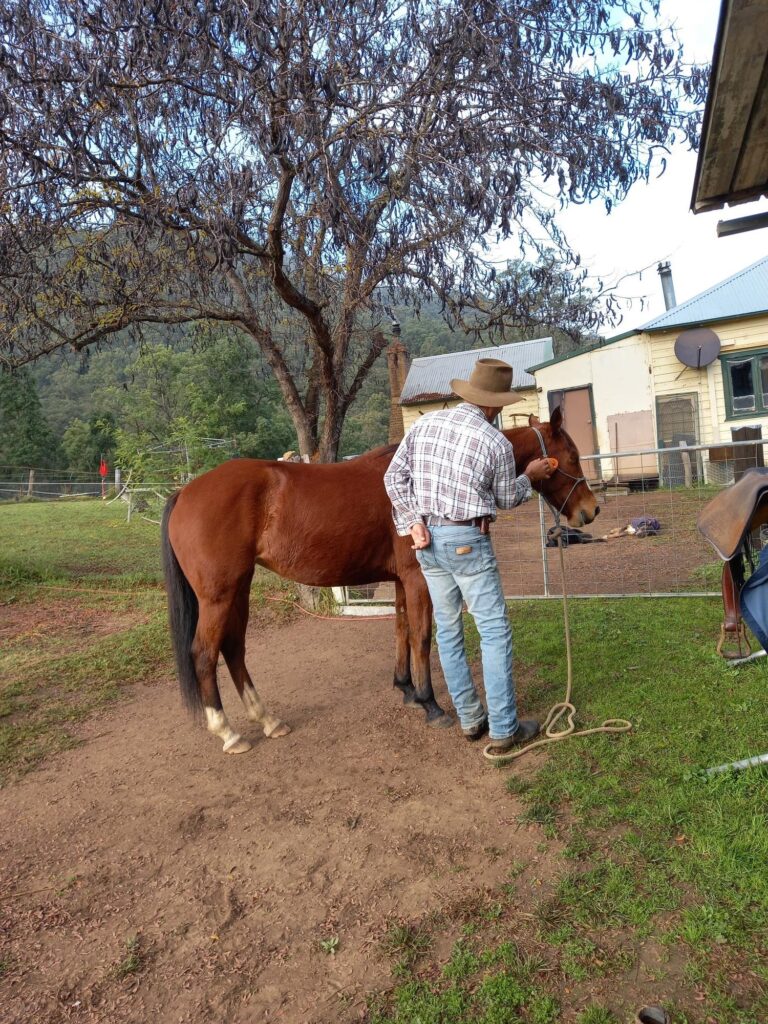
In the previous post I described the stillness of a supportive holding space. Here, I want to talk about the significance of boundaries in the creation of that space and the role they play in building a horse’s confidence in our reliability.
While ‘boundaries’ is a commonly used term in the horsemanship world, as well as in various therapeutic settings, there is considerable confusion around it. This arises, I think, from the assumption that a boundary is simply a line of demarcation between, say, a ‘human’ here and a ‘horse’ there, that is, from the perspective of the logic of separation. So, when Corey says ‘a boundary creates a connection’, I suspect that many would find this puzzling. In this post I want to show how, from the perspective of relational logic, an apparent separation can create a connection. Once again, the central issue here is that of our state of being – whether we are in a separate or connected state when we set a boundary. In other words, who, and where, ‘we’ are in setting a boundary.

Look again at these photos of Corey and Dorothy in-tune with each other in a supportive space of grooming-being groomed. Another way of describing this situation would be to say that ‘boundaries are in place’. But what exactly does that mean? You will frequently hear people say that the horse is ‘not in my space’ or is ‘respecting my bubble’, but this would be to misunderstand what is happening here. To correct this self-centred perspective by suggesting that the horse might also have a bubble of safety, is still to think in terms of the logic of separation: separate bubbles around the entities, horse and human.
If you imagine this situation, you’ll recognise that, rather separateness, there is a feeling of being at ease together. There is no sense of feeling crowded, confined, pushed or pulled, of having to be on guard, defensive or braced, but this isn’t because there is a barrier between Corey and Dorothy. Rather, as Corey puts it, he ‘adjusts to fit the situation’, to what ‘feels right’ for horse and human being together. For example, if a horse were feeling crowded, he would make an adjustment to allow for more comfort and security. If he felt that he needed a little more room, he might ask the horse to move away, by, for example, smoothly letting out the rope, all the while maintaining a connection. In a sense he would be moving out too, being both here-and-there at once, feeling the horse within him and himself within the horse. In other words, boundaries are being adjusted through a relation, in a space that strictly speaking might be described as a space of simultaneous connection-and-separation.
Importantly, throughout this process, Corey is in a connected state of being, remaining present and open. In fact, he has to be fearlessly open. Were he to be defensive, putting up a barrier between himself and a horse, he would be unable to provide that safe space and adjustment of boundaries for horse-and-human. The moment he wavered or ever so slightly turned in on himself a horse would pick it up and lose confidence in his reliability. Corey, then, has, what could be described, as a holding capacity, a capacity to provide a space which holds open possibility and potential.

Now look again at the photo of Dorothy looking away at something that has caught her attention. As I said in the previous post, if she started to get lost, Corey would pick up a feel to bring her back to the connection. He would be setting a boundary to return her to the safe space of grooming, saying, in effect, ‘you don’t need to go down that path’. In a different situation and/or with a different horse, Corey might need to hold a feel firmly, but, however firm the feel, he’d never pull – he wouldn’t be making the horse do anything. He would simply hold the rein or rope and allow the horse to find that boundary itself. As soon as there was a softening and relaxation, he would release, and get out of the way. Crucially, there would be no change in his way of being – he would remain open, calm, non-reactive.
Maintaining this way of being is particularly important when horses, much like children with parents, ‘test boundaries’, that is, test our reliability as leaders. While this testing takes all sorts of forms, which frequently go unrecognised or misunderstood, it commonly involves pushing on us. For example, imagine a situation of grooming and the horse nudges you. Now, it is possible that the horse is tuning in with you, and, if you are in a relational state, ‘feeling what the horse is feeling’, you’ll know if it’s this or a push. However, a gesture like this is often mistaken for the horse being friendly – ‘oh it wants to be with me’. And, then, you find yourself inadvertently stepping back, and then stepping back a little more as it pushes more. What in fact is happening here is that the horse is looking for support, for a connection that is not present, asking: ‘can I rely on you?’.
If a push like this isn’t addressed it will escalate, either while we are still grooming or later, when we are doing groundwork, saddling, mounting, riding. It won’t just go away, as we might wish. Feeling on their own, with a strong sense of self-preservation, a horse might start looking for things to worry about and take over. We’ll be progressively losing any connection. In reaction to a situation like this, particularly if feeling unsafe, people will often become defensive, backing right off and closing themselves off from the horse and/or becoming busy and noisy, pushing the horse away from them. This would be understood as ‘getting boundaries in place’, from the perspective of separation logic. Such a closing and hardening of being will only exacerbate the situation, further undermining the very thing that the horse is looking for – a reliable connection, leadership.
So, what is the relational alternative to this scenario? What a push calls for is the setting of a clear boundary, done calmly, without judgement or reaction. In the case of the nudge while grooming, one option might be to hold our arm up with good timing so that the horse runs into it. All the while we would continue grooming, without any change of being, remaining still and grounded. As soon as there had been a softening, you would have released your arm. Setting a boundary in this way is giving the horse the best opportunity to relax, and, without taking any offence, happily get on with whatever they were doing, in this case, enjoying the grooming.
What is important to note here is that a boundary is being set in the very process of our being a calm, grounded presence, continuing the grooming. The particular technique used is not the main point – it is a part of our whole horse-and-human being offering support. Even when setting a boundary takes the form of a clear ‘no, not that, not there’, when done in this relational way, the aim is to bring the horse out of a separated state of distraction or worry back into connection. Back to a reliable holding space, which is simultaneously bounded and unbounded.
With thanks to Andrew, Corey and Suzi.
Great article Ann.
It certainly took me a while to understand this and every now and then I slip up, give myself a talking to and start again in the never ending search for improvement.